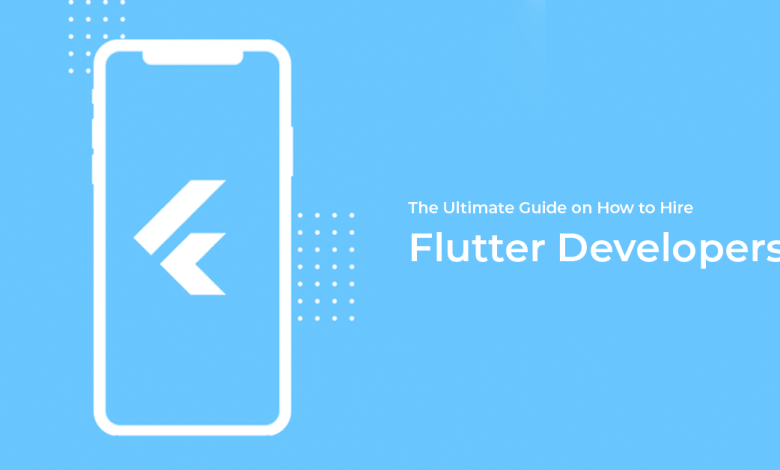The Ultimate Guide on How to Hire Flutter Developers

Are you looking to hire Flutter developers? It can be a daunting task, especially if you are new to the process of hiring the right person for the job. There are numerous job sites, as well as platforms to help you find the best Flutter developers. Here’s an ultimate guide that will help you pick the best candidates in just no time!
Step 1: Decide why you need a Flutter developer
Do you need an Android or iOS app, or both? Do you want a hybrid app (i.e., one that runs on both platforms)? Is your team comfortable using open-source technology? If so, then Flutter might be a good fit for you. Remember: while it’s possible to hire developers who know both languages and can work with either framework, most developers are proficient in only one of them. That means if you want a hybrid app, you should probably hire two different developers. Also, keep in mind that there is no best language—it all depends on what your project needs are. For example, if speed is important to you and your users will spend more time looking at images than reading text, then perhaps Swift would be better than Kotlin. Or maybe Java would be better because it has more documentation available online.
Step 2: Know What You Want (and Why)
If you’re having trouble writing your job description, it’s likely that you don’t know exactly what you want. Make sure your team is crystal clear about all expectations of the project, including what makes it a success or failure. What does a successful prototype look like? How does one reflect positively on everyone involved? What do potential developers need to succeed and how can we help them achieve those outcomes? Know how to hire flutter developers.
Step 3: Think About Money
You can spend as much or as little money as you want on your product. There is no right or wrong amount of money to spend, but it’s important to think about what you’re spending and whether or not you will recover that cost when it comes time for launch. If you have a small budget, focus more on getting content right now, and worry about design, color, and branding down the road. But if you want something visually stunning right off the bat, that’s okay too! The only thing I recommend is taking a moment to plan out your product design before going into things blindly. It makes things easier in terms of timing and execution.
Step 4: Do Your Research, Read Reviews
Before you make your final decision, learn more about potential candidates. One of your most important tasks is to interview as many developers as possible—and we mean as many. This will allow you to compare their rates and find one that fits within your budget. Remember: just because a developer has a lower hourly rate doesn’t mean they aren’t quality, so do not judge them based solely on their hourly pay rate. Instead, focus more attention on factors like industry certifications and experience level in order to avoid costly mistakes later down the road. It’s also important to be upfront about your project from day one with any potential hires.
Step 5: Come Up With A Process
A Technical Interview is a form of structured dialog where questions are asked to assess a candidate’s knowledge, skills, and abilities in relation to an open position. A typical interview process starts with a phone screen or in-person panel interview, followed by one or more technical interviews. A technical interview can consist of different elements; for example, programming tasks or whiteboarding sessions. To complete your entire hiring process effectively you need to put together mock questions that test candidates’ programming skills and make sure you’re asking questions at a reasonable pace throughout each stage of your hiring process. Our extensive database has thousands of questions (programming and non-programming) that will help guide you through each phase. If you don’t have time to write your own questions then our experts can help you out! We have a team of industry experts who work closely with clients and review their job descriptions. They then craft customized coding challenges which they send over to clients as soon as they’re done so that they can be reviewed by their development teams before being sent out to candidates. We have created thousands of these challenges over time which means we’ve seen just about every type of question under the sun! From simple code snippets up to complex logic puzzles, we’ve got them all covered. This ensures that our clients always receive high-quality coding challenges from us and it helps ensure that we provide value-added services beyond just writing code problems!
Step 6: Prepare & Approach Potential Candidates
When you’re done with your post, it’s time to start approaching potential candidates. There are two ways that I have found successful: 1) Send a message through AngelList; 2) Linkedin. Here are some messages that I have sent out to candidates
Step 7: Set Up Interviews
Once you’ve created a writing schedule, it’s time to set up interviews. If your site is new, people might not be aware of your brand. In that case, call or email people you want to interview and tell them about your website and why they should appear there. You can easily find potential interviewees through Google by searching for the name of the person + interview (for example Steve Jobs interview). Once you find an interesting person—or company—that fits with your topic area, look for contact information like email addresses and social media handles (to connect with them directly). Most articles suggest reaching out via email first. Here are some templates
Step 8: Phone Screening
This is where you’ll be spending your first (and probably most valuable) 30 minutes. During phone screenings, you should ask some basic questions: Who is your main target audience? What’s your revenue model? If a user has a problem, how will they interact with support? How will you display ads in order to make money? You may also want to get details about things like technology stack or competition, but I recommend holding off on these questions until after step 9 (but feel free to use them if something seems out of whack). The goal of step 8 is pretty simple: You want to make sure that everyone you move forward with knows what they’re doing and can follow through.
Step 9: Be Ready For A Technical Interview
We’ve now gone through an entire list of possible top 25 interview questions for a Google software engineer. But you don’t have to answer all of them perfectly! That was never our goal. Instead, we wanted you to familiarize yourself with some technical questions, including possible ways to approach them and reasons why you might choose one over another. So by now, even if you haven’t memorized every question and answer (but really, go through each section again!), I would hope that your head is swimming with information about interviewing for tech jobs. This brings us to our final topic—
Step 10 Finalize Offer And Sign Off On Contract.
The contractor should then send a signed copy of your agreement back to you. You should also sign it, scan it and send a copy back to them (on paper). Once they have that, they can begin work and start billing you on a recurring basis. Some states have laws requiring contractors (or freelancers) to pay taxes quarterly or even monthly if they’re operating as a business. Make sure you understand what taxes your contractor has already paid in their country of origin and how much tax will be taken out before sending any payments.
For More Details: Everything about Hire a Flutter Developer – a Complete step by step Guide





